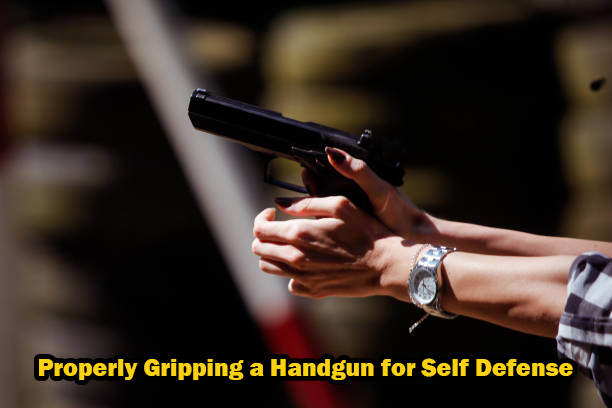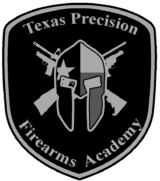
A fundamental aspect of both becoming a proficient shooter and someone who has the capability to safely defend themselves in a handgun related situation is mastering the art of gripping a handgun. The way you hold your firearm directly impacts accuracy, recoil management, and overall shooting performance. In this article, we will delve into the key components of a proper handgun grip and provide you basic instructions to begin honing you grip to help you achieve a secure and effective hold in all situations.
Key Components of Grip
The key components of a solid and controlled grip can be broken down into 6 distinct components.
- Understanding the Importance of a Proper Grip: A solid grip serves as the foundation for accurate shooting. It allows you to maintain control over the firearm, manage recoil efficiently, and promote consistent shot placement. Neglecting this critical aspect can result in decreased accuracy and slower skill development.
- Handgun Grip Components:
- Dominant Hand Placement: Your dominant hand should establish a high, firm grip on the backstrap of the handgun. The web of your hand (between the thumb and index finger) should be as high as possible on the grip.
- Fingers and Trigger Control: Wrap your fingers around the grip, ensuring that your trigger finger remains indexed along the frame until you are ready to fire. This minimizes the risk of an unintentional discharge.
- Non-Dominant Hand Placement: The non-dominant hand should complement the grip by filling the voids left by the dominant hand. The palm of the non-dominant hand should press against the fingers of the dominant hand, creating a solid connection.
- Interlocking Your Hands: Interlock your fingers, ensuring that the fingers of the non-dominant hand securely mesh with the fingers of the dominant hand. This interlocking enhances stability and control.
- Thumb Placement:
- Dominant Hand Thumb: Point the dominant hand thumb forward along the frame, parallel to the slide. This helps in preventing interference with the slide’s reciprocating motion.
- Non-Dominant Hand Thumb: The non-dominant hand thumb should be positioned underneath the dominant hand thumb, forming a solid base and preventing the firearm from shifting during recoil.
- Slight Forward Tilt: Angle the handgun slightly forward, with the barrel pointing towards the target. This forward tilt aids in controlling muzzle rise during recoil, promoting faster target reacquisition.
- Maintaining a Relaxed Grip: While a firm grip is crucial, it’s equally important to avoid excessive tension. Maintain a balanced level of pressure to allow for natural movement and responsiveness.
- Practice and Consistency: Achieving a proper grip is a skill that improves with practice. Regularly dry fire your handgun to reinforce muscle memory and refine your grip technique.
Next Steps:
Practical Training
If possible, we definitely recommend that you attend firearms training courses or seek guidance from professional and experienced instructors. They can provide personalized detailed feedback on the fly, correct any errors in your technique, and offer valuable tips for improvement as well .
A proper handgun grip is the cornerstone of marksmanship and firearm safety. By understanding the key components and diligently practicing the correct technique, you can enhance your shooting skills, boost accuracy, and ultimately become a more proficient and responsible handgun owner. Remember, safety always comes first, so ensure your firearm is unloaded and follow all safety guidelines when practicing your grip technique.
License to Carry
Having a good solid grasp on your grip (pun intended) is the key to all shooting activities especially in self defense situations. After you have mastered your grip an have a handle on general gun use/safety you can take it to the next level by obtaining your license to carry (LTC) or concealed handgun permit. You may ask why do I need a license to carry? Well, much like your grip it is a tool in your bag of tricks for safety and self-defense. Here in Texas, we do have permitless carry which means as long as you can legally own a gun you may carry it with you, however there are limitations placed on it. There places that are restricted for permitless carry. A Texas license to carry (LTC) allows you to ignore most gun restriction signs, carry in places where permitless carry is not allowed and various other benefits.
If you are ready to take it to the next level and get your Texas License to Carry (LTC) you can enroll in our online Texas License to Carry class right now and begin literally immediately form the comfort of your own home. Our online Texas license to carry course is 100% approved by the Texas DPS (Department of Public Safety) statewide and will have you ready to apply for your Texas license to carry in no time.
Enroll now for our Online Texas License to Carry Class!

